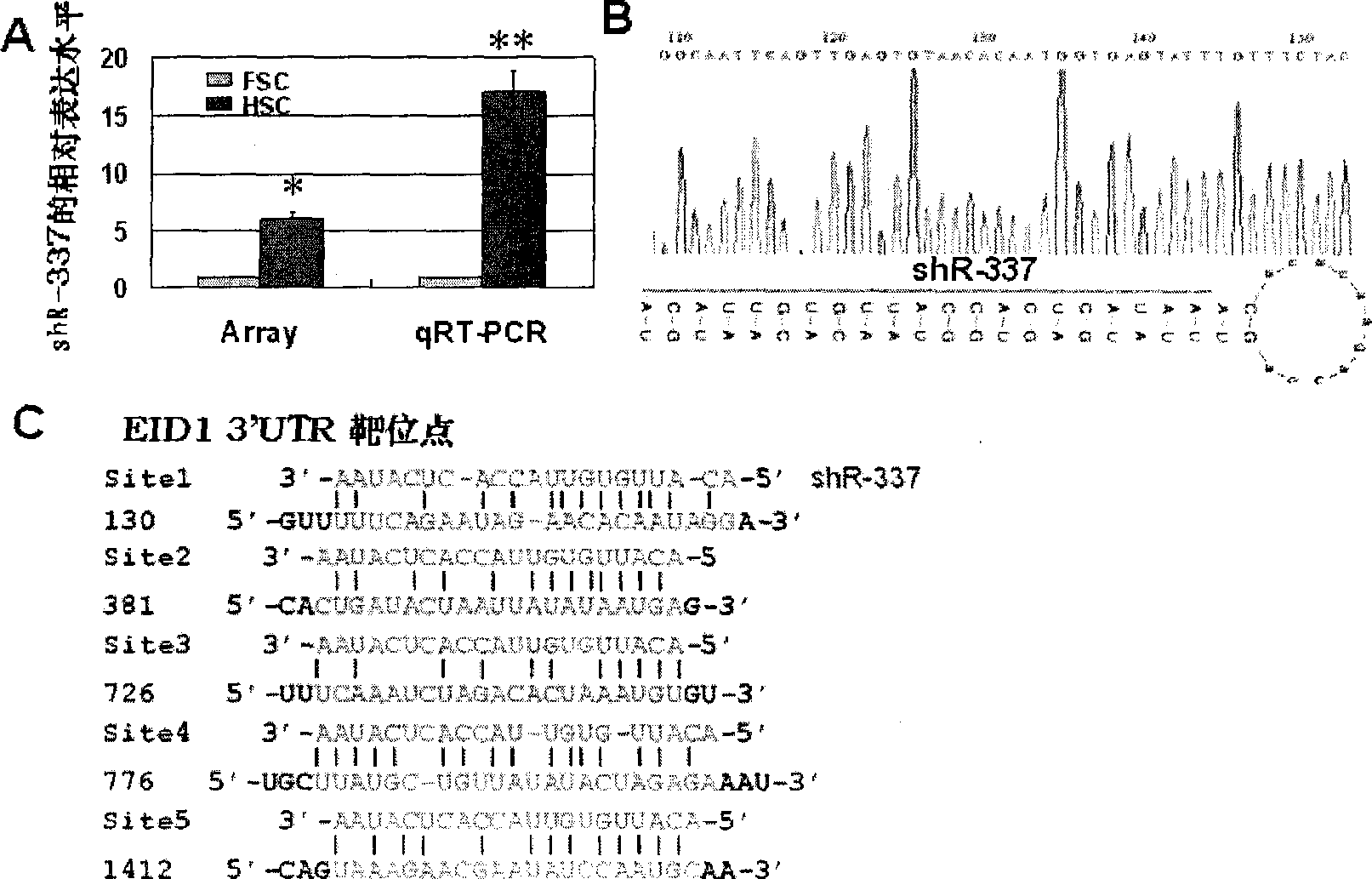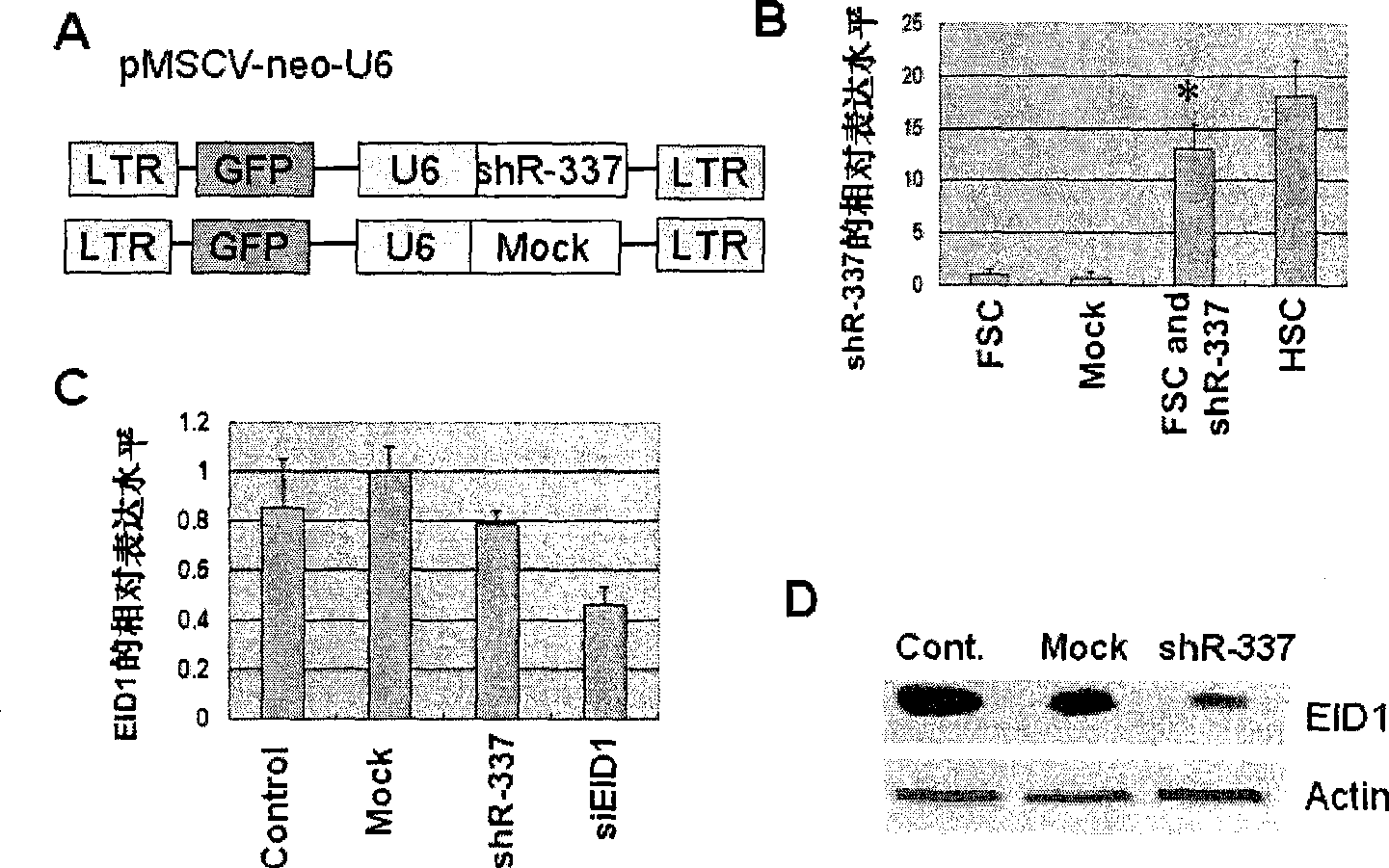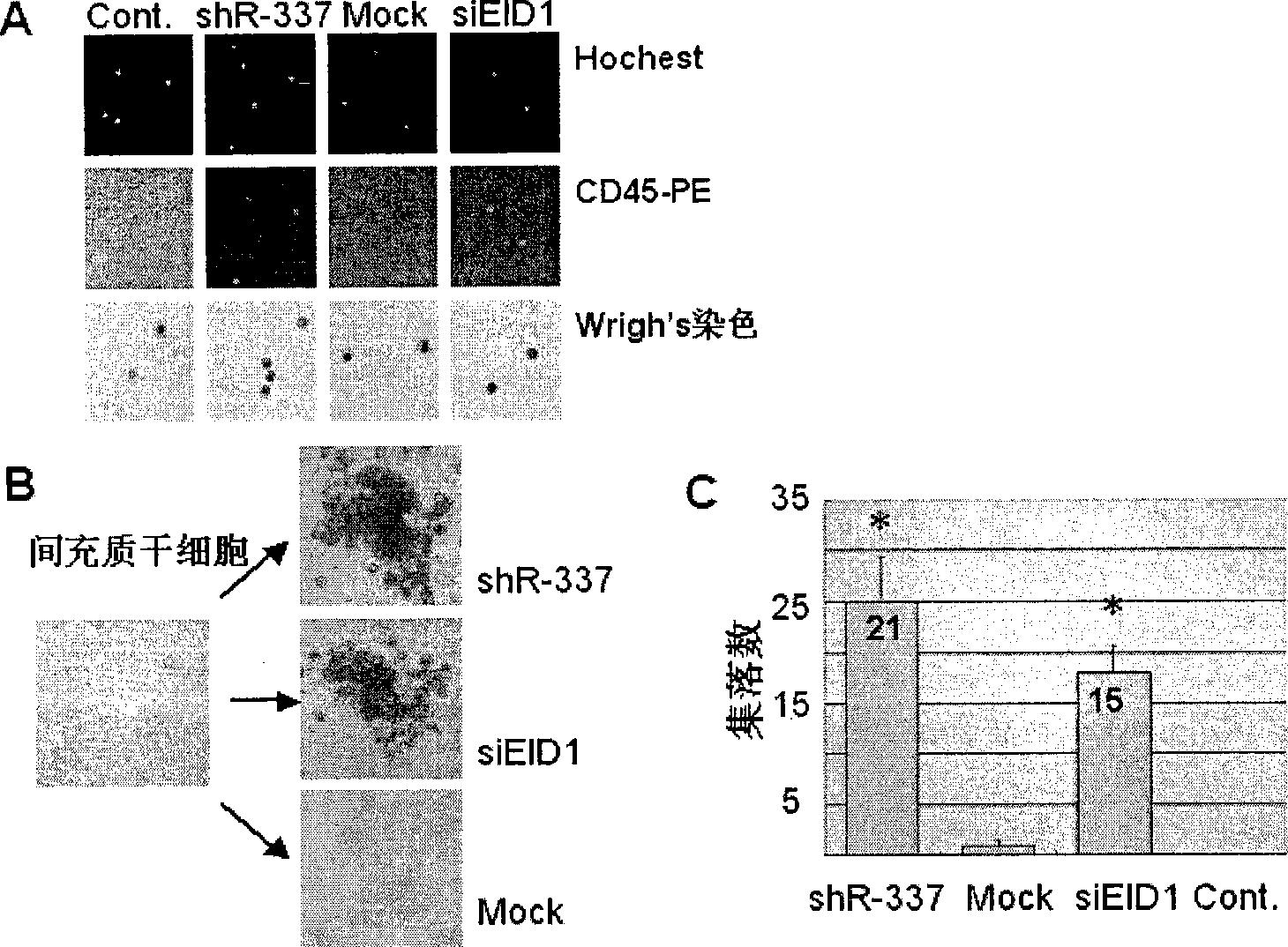Small RNA numerator for differentiation of mesenchyma stem cell into hematopoiesis cell and function target point thereof
A technology of mesenchymal stem cells and hematopoietic stem cells, applied in the field of gene medicine, can solve problems such as inability to transform bone marrow mesenchymal stem cells into hematopoietic stem cells
- Summary
- Abstract
- Description
- Claims
- Application Information
AI Technical Summary
Problems solved by technology
Method used
Image
Examples
Embodiment 1
[0023] Example 1. Cells and Cell Culture
[0024] The bone marrow samples were obtained from 30 healthy volunteers (aged 20-50 years old). The bone marrow was obtained in accordance with the guidelines of the Peking Union Medical College Hospital Management Committee for scientific research on the use of human materials and with the consent of the donors. Isolated from bone marrow with the phenotype Flk1 + CD31 - CD34 -The basic steps of the stem cells are: mononuclear cells are obtained by sucrose gradient density centrifugation (centrifugal force is 1.077g / ml). The hematopoietic stem cells in the obtained monocytes were eliminated by using magnetic beads bound with CD5, GlyA and CD34. In order to obtain cell clones derived from single cells, the bone marrow cells of each patient were serially diluted to 9600 wells of fibronectin (fibronectin, catalog number W1509, purchased from Genitix, UK) and collagen (collagen , Cat. No. W1557, purchased from Genitix, UK) on culture ...
Embodiment 2
[0025] Example 2. Construction and transfection of the expression vector of the short hairpin small nucleic acid pre-shR337
[0026] We discovered a short hairpin small RNA gene named shr-337 from the first intron of the human protein-coding gene SH3PXD2B using bioinformatics. In order to confirm that this small RNA gene can produce corresponding functional small RNA, we detected its expression in hematopoietic stem cells by cloning sequencing technology ( figure 1 A). In order to construct a viral vector capable of expressing this small RNA, short hairpin DNA sequences corresponding to the sequence of pre-shR337 were synthesized by chemical synthesis: 5'-GATCCCGTGTAACACAATGGTGAGTATTTGactagaatataCAAATACTCACCATTGTGTTACATTTTTTGGAAA-3' and 5'-AGCTTTTCCAAAAAATGTAACACAATGGTGAGTATTTGtatattctagtCAAATACTCACCATTGGT-GTTAC', The two synthesized DNAs were annealed to form double-stranded DNA, and the above-mentioned DNA was cloned into the retroviral vector pMSCV (Cat. No. 35140, Invitro...
Embodiment 3
[0027] Example 3. Overexpression of shR-337 can induce bone marrow mesenchymal stem cells to differentiate into hematopoietic stem cells
[0028] figure 2 B shows the expression level of shR-337 in cells detected by standard quantitative RT-PCR after the viral vector containing shR-337 was transfected into the human bone marrow mesenchymal stem cells cultured in Example 1. Compared with the situation of control and false small RNA transfection, transfection shR-337 virus expression vector (expression vector map schematic diagram sees figure 2 A) Afterwards, the expression level of shR-337 in the cells was significantly increased ( figure 2 B). Moreover, it can be maintained in cells for a long time after transfection with shR337. 2 days after highly expressing shR-337, the target gene EID1 of shR337 can be detected with slight changes in its transcription level by RT-PCR reaction ( figure 2 C), but the protein expression level of EID1 was significantly reduced by weste...
PUM
 Login to View More
Login to View More Abstract
Description
Claims
Application Information
 Login to View More
Login to View More - R&D
- Intellectual Property
- Life Sciences
- Materials
- Tech Scout
- Unparalleled Data Quality
- Higher Quality Content
- 60% Fewer Hallucinations
Browse by: Latest US Patents, China's latest patents, Technical Efficacy Thesaurus, Application Domain, Technology Topic, Popular Technical Reports.
© 2025 PatSnap. All rights reserved.Legal|Privacy policy|Modern Slavery Act Transparency Statement|Sitemap|About US| Contact US: help@patsnap.com



